From the February issue of Apollo: preview and subscribe here
This spring, a rehang at the Guildhall Art Gallery brings little-known 19th-century paintings out of storage, and Tate Britain stages the first synoptic exhibition devoted to Victorian sculpture. Has London ever had such a thirst for Victorian art?
In 2013 the Guildhall Art Gallery in the City of London staged ‘Victoriana: The Art of Revival’, a romp of an exhibition that juxtaposed tattoos, taxidermy, wallpaper, Ligia Bouton’s The Adventures of William Morris Man: William Morris vs. Owen Jones, and a design for something called a Telectroscope. It even included a music video by Dan Hillier for a rap battle between Riz MC and Envy, in which a dysfunctional couple embark on what curator Sonia Solicari described as ‘a destructive stomp through a reimagined Victorian London’, and Queen Victoria features briefly as a cannon-firing cyborg in a hefty crown, evidently not amused. In exhibitions like this, and the gallery’s current imaginative take on representations of Tower Bridge (until 26 April), the Guildhall Art Gallery has all but reinvented itself as one of the UK’s finest purveyors of Victorian visual culture with a twist.
This spring, principal curator Julia Dudkiewicz has spearheaded its biggest transformation since the gallery designed by Richard Gilbert Scott to house the City of London Corporation collection opened in 1999. The old Guildhall Art Gallery had been built in the late 19th century, but was one of the casualties of the Blitz; the problem of how its replacement should look and function in one of London’s most significant historic precincts remained unresolved for several decades. The discovery of the remains of a Roman amphitheatre on the site in 1998 also meant that plans had to be adapted, and this subterranean revelation is a must for every visitor.
The Guildhall Art Gallery is not an easy place to display works of art. It sometimes has to double as a grand venue for City of London functions. And it’s home to one of England’s largest easel paintings, John Singleton Copley’s The Defeat of the Floating Batteries at Gibraltar, September 1782 (1783–91), the sheer size of which dictates the proportions of the interconnected gallery levels. With these, and with other singular features in play, a complete rehang presents numerous obstacles.
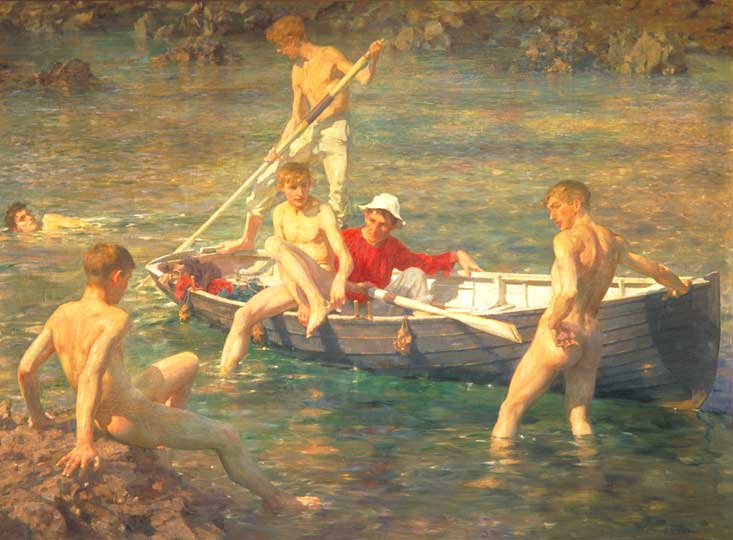
Ruby, Gold and Malachite (1902), Henry Scott Tuke. Image: Courtesy Guildhall Art Gallery, City of London Corporation
The Guildhall Art Gallery has risen to the challenge, crafting a thematic hang along similar lines to the topics explored in Tate Britain’s ‘Pre Raphaelites: Victorian Avant-Garde’ exhibition in 2012–13. The walls’ riches are divided into categories including Faith, Beauty, Leisure and Labour. Dante Gabriel Rossetti’s La Ghirlandata (1873), with its arresting emerald and vermilion hues, is sited across the expansive main gallery (and its wacky neo-Victorian carpet) from Henry Scott Tuke’s sexy Ruby, Gold and Malachite (1902) and Henry Herbert La Thangue’s intensive study of rural labour, Mowing Bracken (1903). In a witty contrast of rural and urban work, La Thangue’s monumental canvas is hung near J.B. Pyne’s Laying Monster Tubes from the New River (1855), a paean to the latest urban engineering techniques. In the Imagination section, William Holman Hunt’s The Eve of St Agnes (1848) brings the Pre-Raphaelite artist’s deep investigation of poetry and medievalism to life in a rush of tiny brushstrokes.
The Guildhall’s approach to its new thematic hang is lightly instructive about Victorian cultural history. There is wall text accompanying each section, but connections between works of art are only really revealed by close and patient attention. The hang is designed to encourage new conversations about Victorian life, whether sparked by James Tissot’s soap opera-like compositions of social embarrassment and cross-class flirtation, or by images of empire, race, and religion. The most exciting aspect of this new format is just how much of the display will be a fresh feast for the eyes, even for the most seasoned of Victorian art lovers. An astounding 70 per cent of works shown in the revitalised hang of the Victorian Gallery were previously in storage (the entire City of London Corporation collection numbers some 4,500 works): this material hasn’t been exhibited here before, and most of the paintings have never been loaned to other exhibitions. It includes some of the best of Victorian artistic technique, representations of social values (and critique of them), and sheer eccentricity. Go for a glimpse of Frederic Leighton’s classic meditation on sound and vision, The Music Lesson (1877); linger with John Gilbert’s A Girl with Fruit (1882) and John Byam Liston Shaw’s The Blessed Damozel (1895), a hypnotic response to Rossetti’s poem.
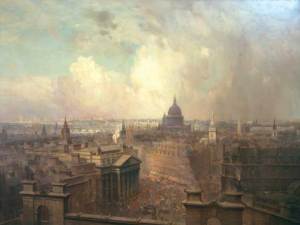
The Heart of the Empire (1904), Neils Moeller Jund. Image: Courtesy Guildhall Art Gallery, City of London Corporation
The Guildhall Art Gallery also has more than its fair share of representations of the City of London at its ceremonial best, including Niels Moeller Lund’s The Heart of the Empire (1904), shown at the Yale Center for British Art’s ‘Edwardian Opulence’ exhibition in 2013. Lund’s painting presents a misty grey and butter-yellow expanse of London’s skyline at the height of Edwardian prosperity. Look again, and one notices that in the far distance the gothic towers of Westminster Abbey and the New Palace of Westminster are present but barely visible. Lund’s ‘heart of empire’ is the City, with St Paul’s benevolently watching over the pace of economic activity. The empire’s core is not to be found in the monarchy nor the government, Lund’s painting claims; it is to be found in the wealth of the City of London. This is a bold political stance, and one that seems particularly relevant this spring as, elsewhere in London, Tate Britain mounts an exhibition investigating the importance of sculpture in British imperial territories in the 19th century.
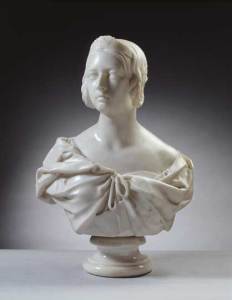
Queen Victoria (1840), Francis Leggatt Chantrey © Royal Collection Trust/Her Majesty Queen Elizabeth II 2015
‘Sculpture Victorious’ (25 February–25 May) is the first major exhibition devoted to Victorian sculpture. A collaboration between Tate and the Yale Center for British Art (where it was shown in autumn 2014), the exhibition was devised by Martina Droth, Jason Edwards and Michael Hatt, and is accompanied by a weighty and sumptuously illustrated catalogue packed with extensive entries by top art historians from both sides of the Atlantic. The exhibition interprets sculpture as broadly as possible: from marble busts to coins, reliefs, intricate wood-carving, and jewellery. Photography and Victorian books and prints are strategically incorporated to attest to sculpture’s perennial relevance and importance throughout Britain and its empire in the period, from local monuments to grand statements of international power like the Albert Memorial.
As the curators state in the opening essay, ‘history was sculpted by the winners.’ Due to its size, cost, materials, and technical complexity, sculpture was often commissioned for major occasions and tended to trumpet triumphant messages through allegorical means. But the curators have also paid close attention to provocative instances of eccentricity and political resistance – particularly in how audiences reacted to sculpture. Queen Victoria’s image was ubiquitous throughout the empire in every conceivable medium from stamps to statues; sculptures of the Queen were sited in cities and towns as a binding force of political dogma, and they often formed the epicentre of ‘Empire Day’ celebrations. But in post-colonial contexts many of these representations of Victoria and symbols of empire were destroyed or defaced, as they became the focus of iconoclasm underpinned by the legacies of oppression and the arrival of new and contentious systems of leadership. In 2013, the contemporary artist Hew Locke, born in Britain and raised in Guyana, painted over a large photograph of a controversial public statue of the queen in Guyana, adding African and Amerindian designs and images of Guyanese colonial and post-colonial history. This work reframes the Victorian image of the Queen in relation to legacies of empire, in an artistic act Locke describes as ‘mindful vandalism’. ‘Sculpture Victorious’ promises not to shy away from these tangled modern debates, and the exhibition will be far richer for it.
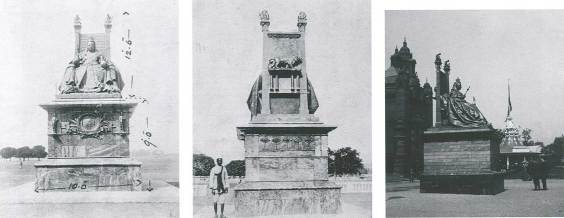
Photographs of George Frampton’s (1860–1928) c. 1902 sculpture of Queen Victoria on the Maidan, Kolkata, India. Photo: © Henry Moore Institute
The exhibition catalogue includes a valuable set of sculptors’ biographies that highlight lesser-known figures, including the Irish metalworker Edmond Johnson and the Indian silversmith Oomersi Mawji. The book also features a helpful list of primary and secondary source material for further reading, as well as several short essays on significant Victorian sculptures that could not be included in the exhibition. The tantalising highlight of these is Edward S. Cooke’s discussion of a ‘Lady’s Companion’. This object was produced by the Australian silversmith Henry Steiner in the 1860s, and consists of a mounted emu egg with images of Queen Victoria and the Prince Consort carved in delicate relief, surrounded by silver cornucopia, vegetal scrolls, and a backward-glancing kangaroo. Responsive to the European tradition of mounting eggs and shells, its delicacy indicates its luxury purpose: this item was designed to be a perfume bottle holder.
This object’s variety of materials, highly decorative nature and unusual function indicate how sculpture reached beyond the monumental in the 19th century. It was a controversial subject in wider debates about the intersection of high art, decorative art, and industry. In the exhibition, a giant ceramic elephant complete with howdah, which was produced by Minton & Co. in 1889 for the Exposition Universelle, provides the grounds for one of the key arguments made by the curators: that sculptors were not like other artists. Their work was often collaborative and on a large scale, making use of numerous anonymous staff to make a designer’s creation. Sculptors could be carvers, modellers, metalworkers or other types of craftspeople. Sculpture isn’t as stable a field as we once thought it was, even in the era that elevated it to a symbol of nationhood more than ever before. In the form of a brightly coloured, wrinkly skinned and lavishly adorned elephant, the exhibition shows us how Victorian sculpture blurred categories that are still contested today. What is ‘art’ and what is ‘craft’? As the curators explain, ‘where Craft is the David to Industry’s Goliath, sculpture appears first as a collateral of the forces of industry and later as a subset of the Arts and Crafts.’
Emblems of empire appear in surprising places throughout, and looking out for their more obscure manifestations is a stimulating way to re evaluate the attraction of sculpture for a range of Victorian audiences. Sculpture often affirmed and aggrandised British imperial ambitions and conventional patriotism. Among the examples in ‘Sculpture Victorious’ is a casket made in 1903 by the metalworker Henry Wilson honouring the imperialist politician Joseph Chamberlain. Though a secular object, its iconography and form are distinctly religious, and its inspiration lies in medieval reliquaries studded with precious gems. As Chamberlain was Secretary of State for the Colonies, the casket makes reference to the connections between maritime travel and imperial iconography. Standing figures represent India, Canada, New Zealand and Australia, seemingly floating on a rock crystal sea. The cover features allegories of Love, Capital and Labour, and all is surmounted by an image of St George fighting the dragon. Empire is presented as both coherent and Romantic at a moment when conflict in South Africa and elsewhere was giving rise to growing anti-imperialism.
In such microarchitecture, and in how it examines the Gothic Revival splendour of the House of Lords, ‘Sculpture Victorious’ explores the political edge of historicism and style. As Charles Barry and A.W.N. Pugin’s New Palace of Westminster steadily rose, the relevance of medievalism for ordinary people was intensely questioned by the press. For the Edinburgh Review the Palace’s gothic-style statues of Plantagenet and Tudor rulers were pointless and problematic: ‘whether addressing the solitary stranger or the busy crowd, these venerable symbols speak to unlearned eyes in a dead and forgotten language.’ In a period when stylistic debate underpinned the broader question of what art forms were truly original or modern, sculpture adorning the Houses of Parliament – some of which has been loaned (for the first time) to Tate Britain – was a lightning rod for debate.
From pleasure to politics, both Tate Britain and Guildhall Art Gallery have much in store this spring. Victorian art’s appeal is no longer questionable, and between La Thangue’s heroic autumn labourer, Rossetti and Leighton’s representations of sight and sound, and Minton’s resplendent elephant, in London we are spoiled for choice.
The Guildhall Art Gallery’s new thematic hang opened to the public on 16 January.
‘Sculpture Victorious’ is at Tate Britain, London, from 25 February–25 May.
Click here to buy the latest issue of Apollo
Related Articles:
First Look: ‘Sculpture Victorious: Art in an Age of Invention’ at the Yale Center for British Art (Martina Droth)
Gallery: ‘Sculpture Victorious: Art in an Age of Invention’ at the Yale Center for British Art
‘A Victorian Obsession: The Pérez Simón Collection’ at Leighton House (Annabel Sheen)
Unlimited access from just $16 every 3 months
Subscribe to get unlimited and exclusive access to the top art stories, interviews and exhibition reviews.

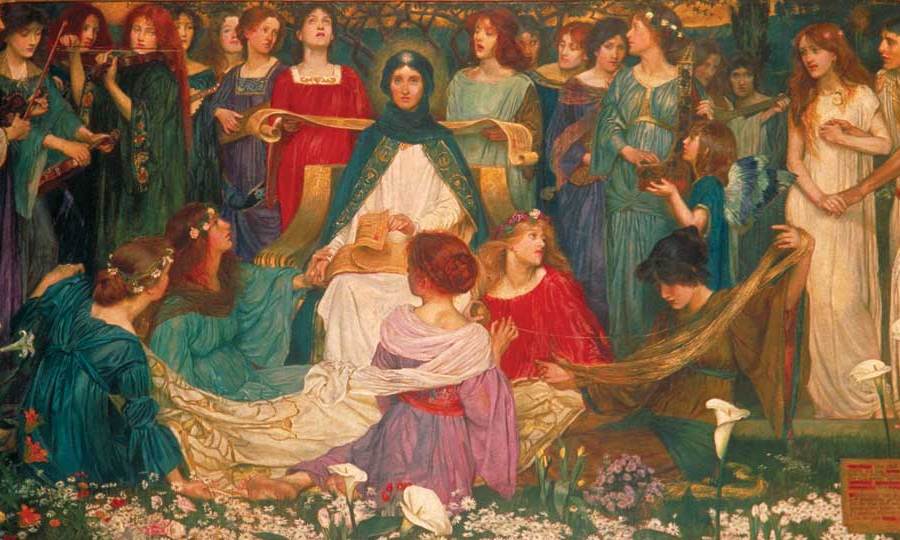
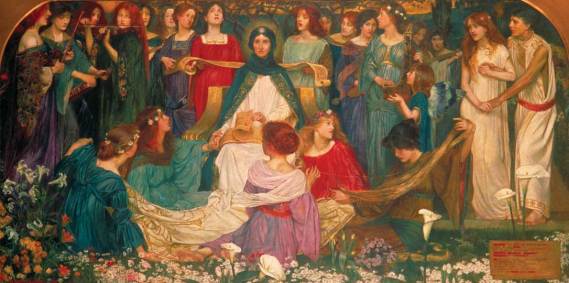
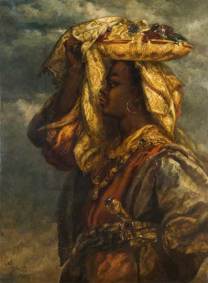
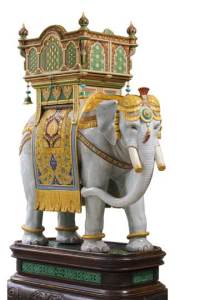
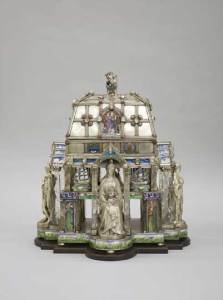
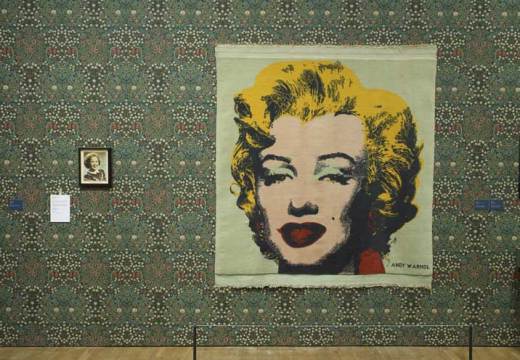
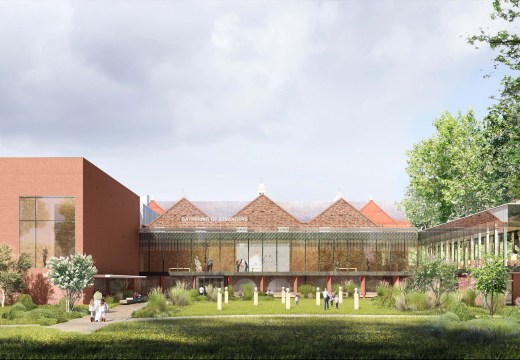










![Masterpiece [Re]discovery 2022. Photo: Ben Fisher Photography, courtesy of Masterpiece London](http://www.apollo-magazine.com/wp-content/uploads/2022/07/MPL2022_4263.jpg)
It’s time for the government of London to return to its rightful home